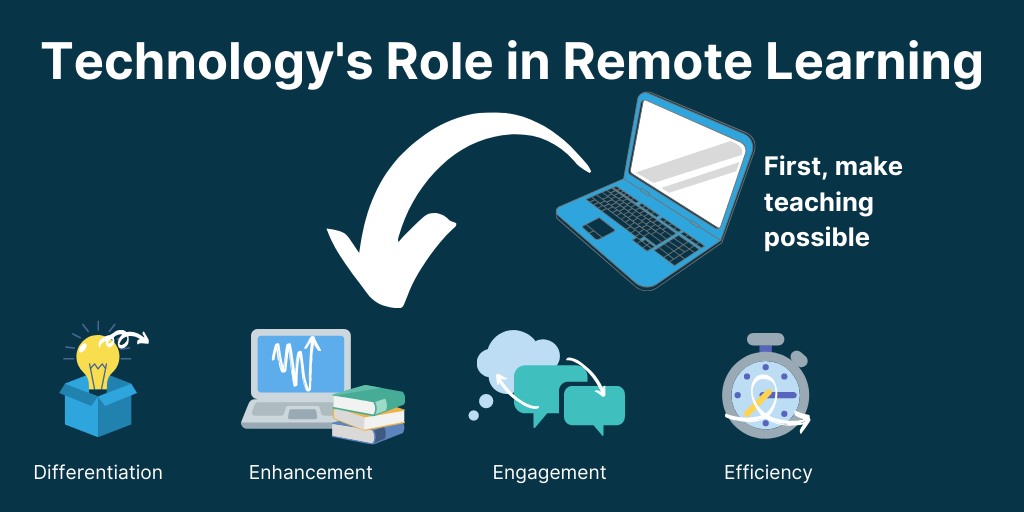Education Technology and Remote Learning

Technologys-Role-in-Remote-Learning-1
Technology has revolutionized education, particularly through remote learning, forging an innovative path for education delivery. Remote learning leverages digital tools, video conferencing, and interactive platforms to transcend physical boundaries, offering flexible and accessible education to learners worldwide. This technological shift has democratized learning, enabling diverse opportunities for collaboration, personalized learning experiences, and asynchronous access to resources. With the integration of AI-driven adaptive learning systems, virtual reality, and immersive simulations, remote learning continues to evolve, fostering engagement and enhancing the educational journey, making knowledge acquisition more dynamic and inclusive than ever before.
The Impact of Education Technology on Remote Learning from the Classroom to the Online
Education technology has profoundly reshaped the landscape of remote learning, bridging the gap between traditional classrooms and online environments. It has empowered educators to craft dynamic, interactive experiences, transcending geographical limitations. From virtual classrooms to adaptive learning platforms, technology facilitates personalized instruction, fosters collaboration, and cultivates diverse learning opportunities. This shift has not only expanded access to education but also revolutionized teaching methodologies. Integrating tools like AI, video conferencing, and gamification, education technology enriches remote learning, fostering engagement and innovation, while ensuring learners can thrive in an interconnected, digitally-driven educational ecosystem.
what is the role of technology in remote learning?
Technology plays several crucial roles in remote learning:
- Accessibility: It enables access to educational resources regardless of location, allowing students to learn from anywhere with an internet connection.
- Communication: Tools like video conferencing and messaging apps facilitate real-time interaction between students, teachers, and peers, fostering discussion, collaboration, and immediate feedback.
- Flexibility: Technology allows for personalized learning experiences, permitting students to progress at their own pace and access resources tailored to their needs.
- Collaboration and Engagement: Through online forums, group projects, and collaborative tools, students can work together virtually, enhancing teamwork and engagement.
- Assessment and Feedback: Digital tools enable efficient assessment methods, including quizzes, assignments, and automated grading, providing prompt feedback to students.
- Adaptability and Innovation: It empowers educators to experiment with new teaching methods, integrating innovative technologies to enhance the learning experience continually.
Technology has revolutionized remote learning, bridging gaps in education by offering accessibility, interactivity, and adaptability. It’s a catalyst for inclusive learning, breaking geographical barriers, and providing diverse resources for personalized education. Through virtual classrooms, collaborative tools, and interactive platforms, technology fosters engagement, communication, and innovation in teaching and learning. Its role in assessment, feedback, and content delivery ensures a dynamic and evolving educational landscape.







